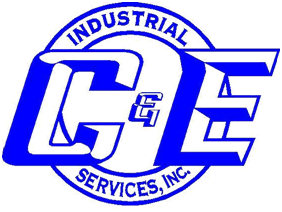
Anyone who has visited the Southwest knows that our unique landscape is what sets us apart from the rest of the country. The climate fluctuates between semi-arid and arid. Our winters are very different from those in Montana or the northeastern seaboard. We have high elevations, mountain ranges, and long expanses of desert lands with cacti, creosote, sage, and more.
As part of our site work preparation services, C&E Industrial Works has done its fair share of digging and excavation in this great landscape of ours. We help construction contractors prepare sites for utility installation or further construction by ensuring that there is proper site management.
Understanding Underground Utilities
If you are a homeowner in Texas, you may have seen signs around that say “Before you Dig, Dial 811.” This is because nothing brings a construction project to a halt—whether it’s planting a tree for landscaping in a residential area or a commercial construction project—like finding a sewer line or gas line in the way.
Underground utilities are common in every city. In order to install many utilities, there is a process of excavation. OSHA defines an excavation as “any man-made cut, cavity, trench or depression in the earth’s surface formed by earth removal.”
Utility companies need vast infrastructure in order to provide water, gas, and other utilities to populated residential neighborhoods, cities, and suburbs. Whenever a property owner or a construction company plans to dig underground, it is essential to contact and/or locate the underground utilities that might be in the path. In the U.S, there will be color-coded utilities to make them easier to identify.
- Red – Electric power lines, cables, and lighting cables
- Orange- Telecommunication, alarm or signal lines, cables, or conduit
- Yellow- Natural gas, oil, steam, petroleum, or other gaseous or inflammable material
- Green- Sewers and drain lines
- Blue – Drinking water
- Purple- Irrigation lines
- Pink- Temporary survey markings
Successful Underground Utility Installation
Utility lines are a vital part of any commercial building project. They include water mains, electrical lines, natural gas pipelines, and sewer lines. This applies to residential areas, as well. For example, when home builders build entire suburban neighborhoods, utility installation is part of the initial work they do to ensure proper excavation of the site.
When talking about commercial building projects, the process for a successful underground utility installation can get a little trickier. If the worksite is on new land that has not yet previously been built on, there is the need for proper site preparation and excavation. Most projects will then require contractors to construct underground utility lines or workaround existing lines.
Site Preparation For Commercial Sites
Site preparation (or “site prep” for short) refers to all of the preliminary work necessary to prepare a site for construction and development. Site preparation involves different tasks like demolition, lot clearing, excavation, stabilization, and shoring. Underground utility work is also part of the initial construction steps and requires experience and forethought. Civil engineers have to consider the lines that will be needed for the project at hand but also about existing infrastructure in the area or possible new sites.
Overall, site prep ensures a fortified foundation for any construction project and guarantees safety and longevity for any project. From building a home to a baseball stadium or commercial building, site preparation requires attention to detail, safety, and regulations.
The World of Trenching
Another important aspect of site preparation involves what is known as trenching. It is closely related to excavation, so all trenches are considered excavations but not all excavations have to be considered a trench. A trench is defined as a narrow excavation that is deeper than it is wide.
Site preparation is a laborious enterprise that requires proper equipment and tools to compensate for the difficulty of digging through the earth. For example, one cubic yard of soil can weigh up to 3,000 pounds.
For trenches that exceed more than 20 feet, a registered and professional engineer is needed for the job. OSHA sets a lot of regulations around excavation and trenches as a safety precaution. Common trenching hazards include:
- Cave-ins: One of the main things to avoid in trenching are cave-ins because a trench can easily collapse if not done correctly. A trench collapse kills an average of two workers every month.
- Falling loads: Equipment and workers falling into trenches are one of the other hazards common in site preparation.
- Depleted oxygen levels: A less-talked-about hazard, but it can still occur in some of these work sites.
Need Site Preparation Services? Contact the Professionals and C&E Industrial Works, Today!
Here at C&E Industrial, we offer excavation and trenching services. We have been assisting construction contractors across the Southwest. Our desert lands have unique characteristics that can present challenges, but with a professional and certified team, you have nothing to worry about. Contact us today!


